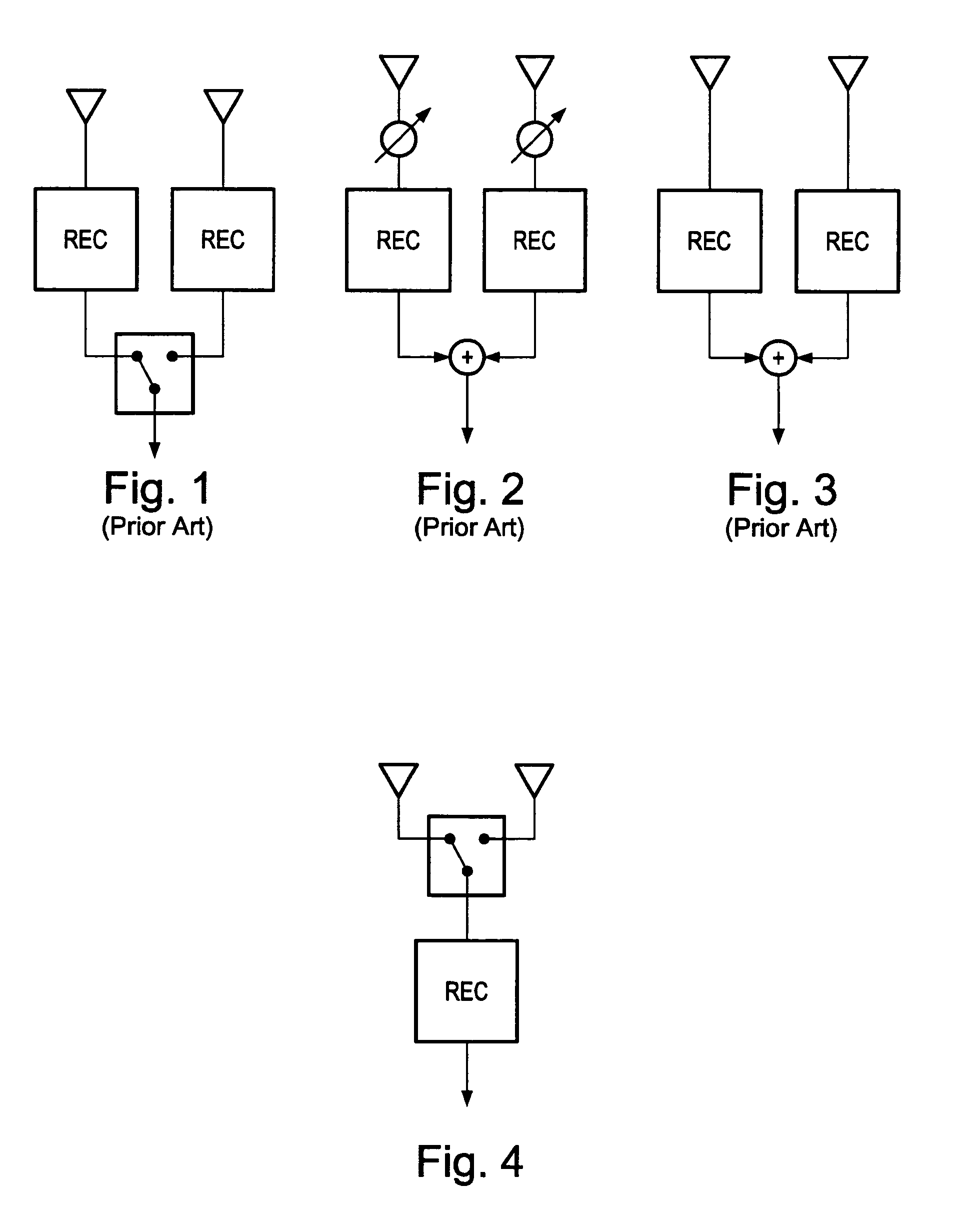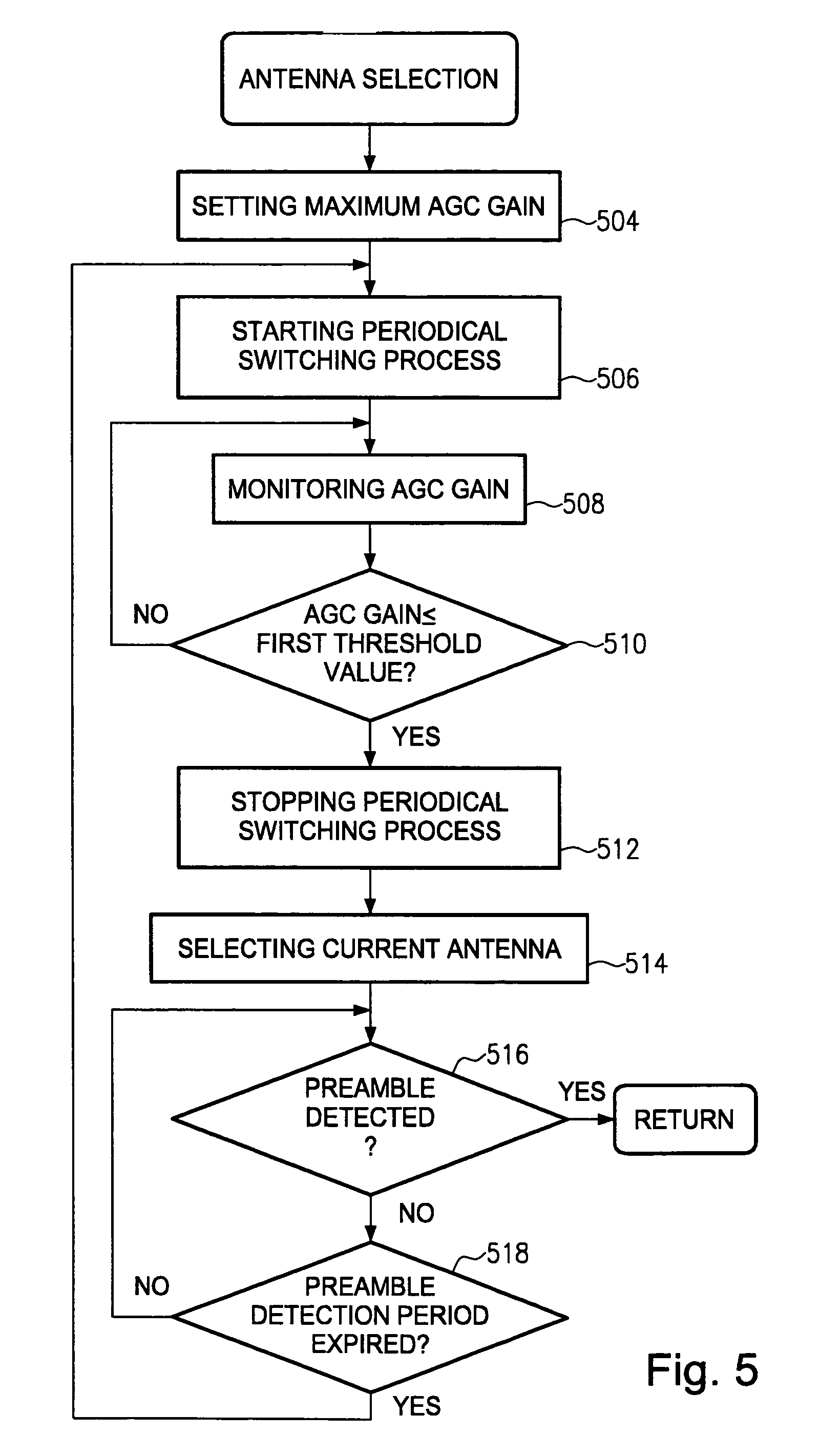Switched combining antenna diversity technique
a technology of switching and antenna diversity, applied in diversity/multi-antenna systems, wireless communication, wireless communication, etc., can solve the problems of increasing the complexity of each branch's signal-to-interference ratio, and increasing the complexity of each branch's signal. , to achieve the effect of improving antenna diversity, low complexity and high performan
- Summary
- Abstract
- Description
- Claims
- Application Information
AI Technical Summary
Benefits of technology
Problems solved by technology
Method used
Image
Examples
Embodiment Construction
[0028]The illustrated embodiments of the present invention will be described with reference to the figure drawings wherein like elements and structures are indicated by like reference numbers.
[0029]Referring now to the drawings and in particular to FIG. 5 which is a flowchart of an antenna diversity method of selecting one of at least two antennae of a communication device, the process shown therein enables a communication device to select an adequate antenna within a time that is preferably shorter than the length of a preamble within a signal frame. Preambles will now be described with reference to FIG. 6.
[0030]As shown in FIG. 6, wherein a timing diagram of a data communication encoding format is shown, each signal frame 608 begins with a preamble 602 that comprises a bit pattern which may have a duration of e.g. 72 microseconds for a short preamble or 144 microseconds for a long preamble. The preamble 602 may comprise a sync field of 56 or 128 microseconds, respectively, and a 1...
PUM
 Login to View More
Login to View More Abstract
Description
Claims
Application Information
 Login to View More
Login to View More - R&D
- Intellectual Property
- Life Sciences
- Materials
- Tech Scout
- Unparalleled Data Quality
- Higher Quality Content
- 60% Fewer Hallucinations
Browse by: Latest US Patents, China's latest patents, Technical Efficacy Thesaurus, Application Domain, Technology Topic, Popular Technical Reports.
© 2025 PatSnap. All rights reserved.Legal|Privacy policy|Modern Slavery Act Transparency Statement|Sitemap|About US| Contact US: help@patsnap.com



